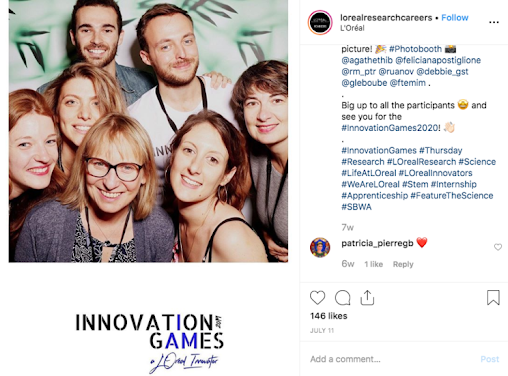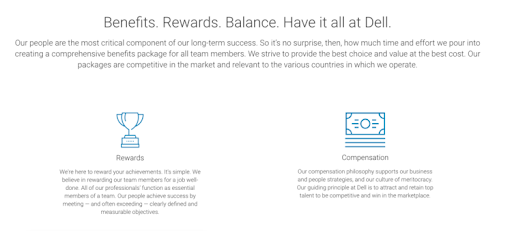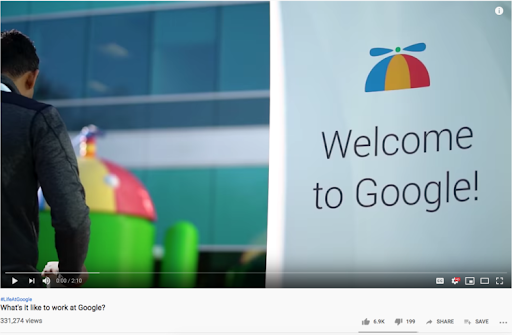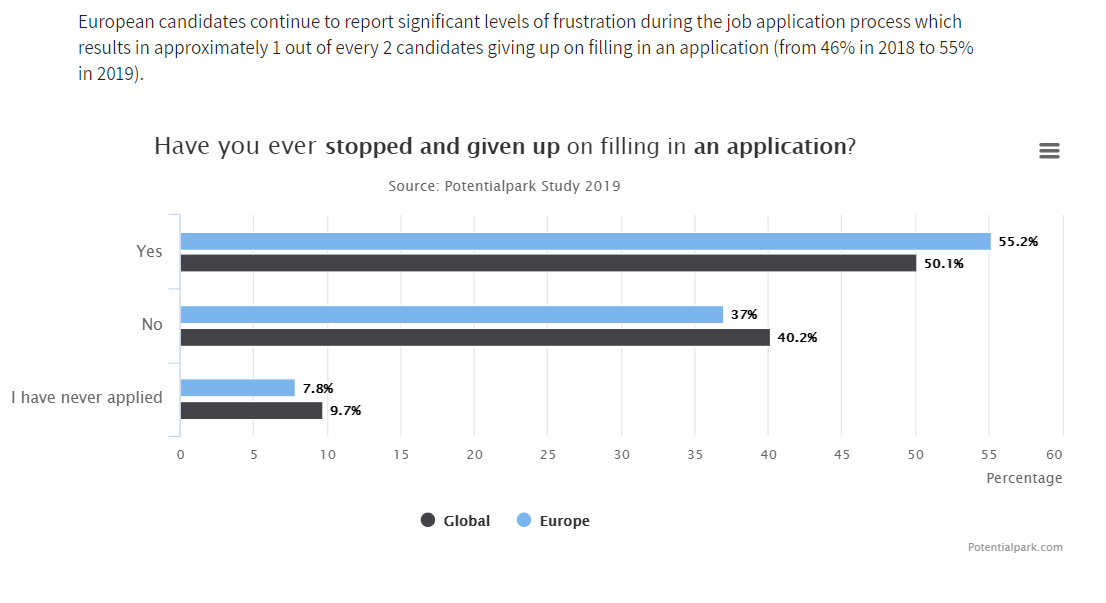A lot has changed in recent years about how candidates look for jobs and how employers find talent, but understanding talent’s needs and preferences remains crucial through every step of the recruitment process. As new candidates, new needs and new preferences come to the table, employers must adapt their recruiting approach. Creating innovative ways to attract not just top talent but the right talent has become the talk among top employers in Potentialpark’s 2019 global study.
For example, the rise of digital tools has significantly shifted how employers interact with candidates online. In the current job market, candidates don’t have the same stress or pressure they did when jobs were more limited; the balance of power has shifted from employer to candidate.
The Potentialpark study says recruitment via social media content is a must for employers. And having a clear objective for what content you should produce in each stage of the candidate journey is vital to understanding how your talent communication strategies are performing. It’s also imperative to listen to what talent experts and industry professionals are saying to know what content is needed to attract, engage and convert top talent into new hires. When you take the steps to understand which content appeals to the right candidates, you’ll notice more qualified candidates coming through the funnel.
With all that in mind, let’s talk about the candidate journey!
Step 1: Awareness Stage
How are candidates finding you on the internet? Chances are that recruitment is the first time a candidate will be hearing about your company. It’s difficult during this stage to be in complete control of your employer brand. This first step — to attract the attention of top talent — relies on how targeted your content actually is.
Your strategy during the awareness stage relies on your ability to effectively communicate your employee value proposition (EVP) right away. Social media is the perfect platform to communicate your message because it lets you reach candidates through organic and paid content and to easily target your ideal candidate. In order to have more qualified talent enter your funnel, you should optimize for the social media channels that your ideal candidates are on. This can be easily done with data. If you don’t optimize your career channels, you’ll inevitably have a high dropout rate and high costs before any candidates even start their journey.
As reflected in Potentialpark’s 2019 U.S. rankings, L’Oreal does a phenomenal job at providing insight into its culture and at giving candidates an accurate idea of what being an employee there looks like. Here’s L’Oreal’s research and innovation careers page on Instagram.

Step 2: Interest Stage
If everything goes according to plan, the candidate should now be showing interest in your company and what’s in it for them. This is a pivotal point in the candidate journey because they might have decided based on your social media content to jump straight to the career website to apply. So it’s important to have an optimized career website. Content such as videos, blogs and testimonials will give candidates a clear idea of what life is like at your company and how they might fit in.
Potentialpark’s 2019 Talent Communication Study found that:
- 63% of candidates were disappointed with the generalization of content.
- 36% of candidates were disappointed with the lack of organization on career websites.
The research indicates that quickly making potential benefits and perks known to candidates is highly valued by top talent. Dell’s career website does a brilliant job of this. Its clear message and focus on its employee benefits gives it a strong competitive advantage when recruiting top talent.

Step 3: Consideration
The candidate should now seriously be considering your company. This is an opportunity to educate and inform them about what you offer as an employer. The career channels to consider here are social media, your career’s website and review platforms. These will help to expand your reach to candidates.
This is a good time to give your current employees the stage by bringing their experiences and stories to life. Creating content focused around your EVP and team value proposition (TVP) will go a long way.
Google does an excellent job of showcasing its culture to potential candidates by interviewing employees and publishing their stories on YouTube. Authenticity is key when producing employee-related content because candidates will quickly see through content that’s anything less than authentic. Bringing your employees’ stories to life offers insights to interested candidates and also makes your employees feel valued and a part of something bigger, which improves retention. It gives employees something to share with their network, which in turn will lead to better PR and better referrals.

Step 4: Application Stage
Now that you have the candidate on the edge of applying, it’s up to your systems and content to make the final push. While providing content around this stage is still important, continuous communication with the candidate before, during and after they submit an application is equally important.
Here’s more from Potentialpark’s 2019 research:

One crucial aspect during this stage of the candidate journey is to maintain an open and clear line of communication. You never want a candidate to be left wondering what happens next. By having an efficient applicant tracking system and clear communication and content, the candidate will apply with a smile.
Post Views: 1,927